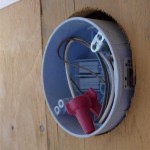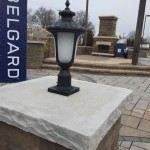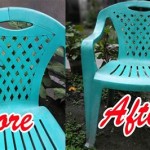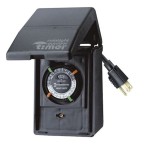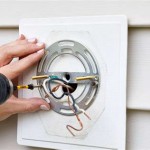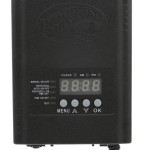What Wire to Use for Outdoor Lighting: A Comprehensive Guide
Transforming your outdoor space with captivating lighting requires careful consideration of the wire used. Whether you're illuminating a pathway, highlighting architectural features, or creating a cozy ambiance, selecting the appropriate wire is crucial for safety, durability, and aesthetic appeal.
Understanding Electrical Ratings
The foundation of wire selection lies in understanding electrical ratings. The key ratings to consider are:
- Voltage: Standard outdoor lighting systems operate on either 120V or 240V. Choose wire rated for the voltage used in your system.
- Amperage: The current (amperage) flowing through the wire must not exceed its specified limit. Determine the amperage of your lighting fixtures and select wire with an amperage rating accordingly.
- Temperature Rating: Outdoor wires must withstand extreme weather conditions. Look for wires designed for outdoor use with temperature ratings suitable for your climate.
Types of Outdoor Wiring
There are three primary types of outdoor wiring:
- Direct Burial Wire: Buried directly underground, this wire is ideal for permanent installations. Ensure it is rated for direct burial to prevent damage from moisture and soil pressure.
- Underground Feeder Cable: Used to connect underground transformers to electrical circuits. This cable requires conduit for protection and is suitable for long runs.
- Above-Ground Wire: Suitable for temporary or portable lighting. Use cable ties or mounts to secure the wire neatly and avoid tripping hazards.
Conductor Material and Insulation
The conductor material and insulation play a significant role in wire performance.
Conductor Material:
- Copper: A highly conductive material resistant to corrosion, making it suitable for outdoor applications.
- Aluminum: Less conductive than copper but lighter and less expensive. Ensure the aluminum wire has a larger diameter than copper wire for the same amperage rating.
Insulation:
- Polyethylene (PE): A common insulation material that provides good electrical protection and moisture resistance.
- Cross-Linked Polyethylene (XLPE): A more durable insulation with higher temperature resistance and improved mechanical strength.
- Polyvinyl Chloride (PVC): A flexible and cost-effective insulation material with good electrical properties.
Additional Considerations
When selecting wire for outdoor lighting, consider the following:
- Wire Gauge: Indicates the wire's thickness. Use thicker wire gauges (lower AWG numbers) for higher current applications and longer distances.
- Stranded vs. Solid Wire: Stranded wire is more flexible and suitable for bending around corners, while solid wire is more rigid.
- Color Coding: Standard wire color coding differs in different countries. Refer to local electrical codes for guidance.
Conclusion
Choosing the right wire for outdoor lighting ensures safe, reliable, and aesthetically pleasing illumination. By understanding electrical ratings, types of wiring, conductor materials, insulation, and additional considerations, you can make an informed decision to enhance the beauty and functionality of your outdoor space.

Using A Cable To Hang String Lights Concord Carpenter
How To Hang Outdoor String Lights Resource Article By Partylights Com

Outdoor Low Voltage Lighting Diy Family Handyman

Choosing Low Voltage Lighting Transformers Cable And Wire Connectors In Lite Outdoor

Wiring Installation Coastal Source

12 2 Low Voltage Landscape Lighting Direct Burial Copper Wire Kings Outdoor

How To Install Low Voltage Outdoor Landscape Lighting The Garden Glove

5 Conductor Outdoor And Underwater Wire For Low Voltage Led Lighting

Newhouse Lighting 48 Ft String Light Hanging Mounting Kit Wire Hooks Stringkit The Home Depot

Wiring And Installing Exterior Lighting
Related Posts
